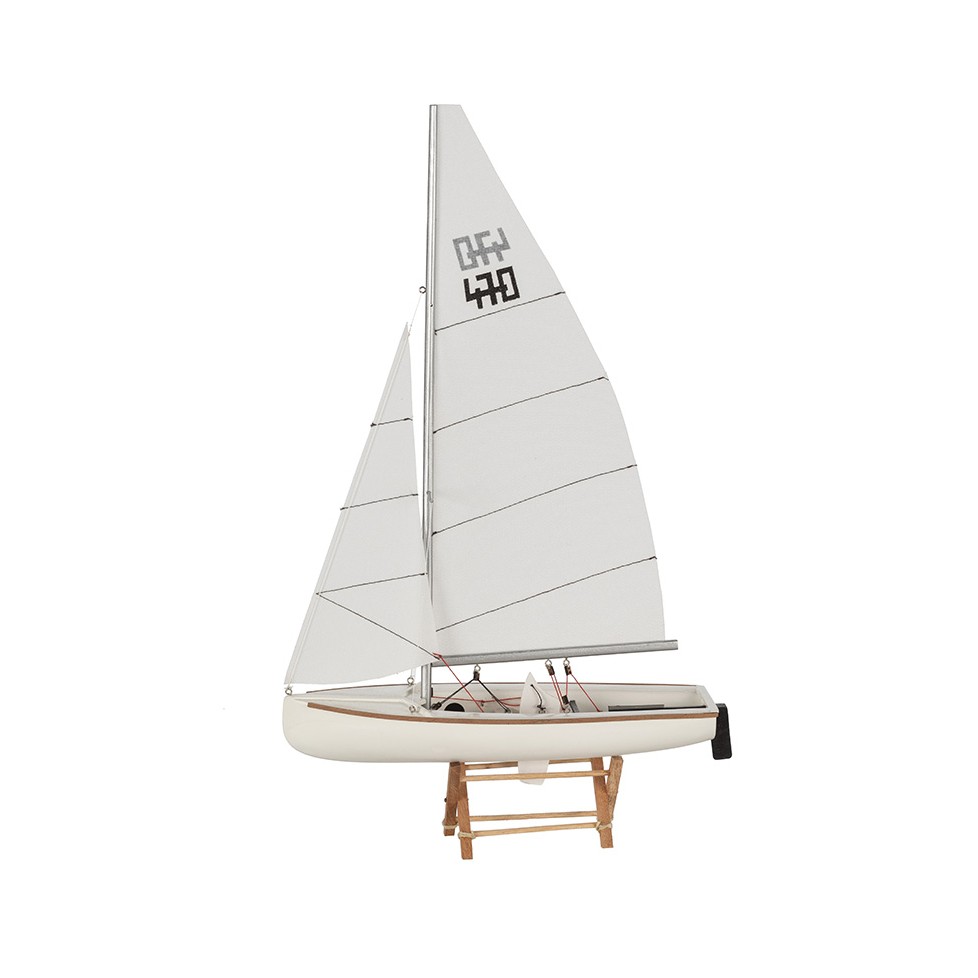

| Los pedidos realizados el día 25 de Julio, se procesarán el día 26 por fiesta local. |











The 470 was created in 1963 by French naval architect André Cornu and French shipbuilder Jean Morin. Is a one-design sailing dinghy type, with a length of 4.70 m., And operated by a crew of two persons. It is equipped with a mainsail and a jib. A spinnaker is also used downwind. One member of the crew has the possibility to use a trapezoid. The hull is built essentially in reinforced polyester fiberglass and coated with a gel coat.
Handcrafted in wood and hand painted.
The 470 was created in 1963 by French naval architect André Cornu and French shipbuilder Jean Morin. Is a one-design sailing dinghy type, with a length of 4.70 m., And operated by a crew of two persons. It is equipped with a mainsail and a jib. A spinnaker is also used downwind. One member of the crew has the possibility to use a trapezoid. The hull is built essentially in reinforced polyester fiberglass and coated with a gel coat.
Handcrafted in wood and hand painted.
Model ship made in wood, painted and built completely by hand. Sizes: 74x50x12.5 cm. The Sagres II (1938), is a three mast ship that in 1962 was turned into a training ship for young cadets of the portuguese navy. It holds the name of a peninsula situated in the Cabo San Vicente (south east Portugal).
The training ship Juan Sebastián de Elcano (1929) is a barquentine in the Spanish fleet. She is named in honor of the basque explorer Juan Sebastián Elcano, who took command of Ferdinand Magellan's expedition to circumnavigate the world following the Portuguese explorer's death. Fully assembled model. Hand-painted and handmade from wood. Measures: 57x36x9 cm
FRAGATA CUAUHTEMOC Ship school of the Navy of Mexico in which the cadets of the Heroic Naval Military School make their practice trips.
The Atlantic (1903) is a 54 m three-mast schooner designed by William Gardner for New York Yacht Club member Wilson Marsall. She won the emperor William II of Germany transatlantic Kaiser's Cup in 1905 setting a crossing record of 12 days, 4 hours and 1 minute.She ended her days as a Coast Guards training ship from 1941 to 1947, defore being broken...
Decorative ship in a bottle made by hand. Sizes: 6,4x7,5x6,4 cm.
Elegant and timeless, this wooden sailboat model is much more than just a decorative piece. It is handcrafted on a wooden base and its sails are made of cotton.A unique detail for sea and sailing lovers, and an original gift with a nautical spirit. Approximate measurements: 24 × 34,8 × 5,8 cm.